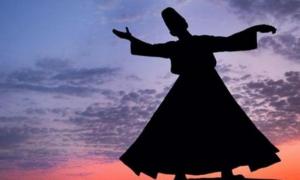(I read an absolutely horrendous editorial in Times of India on April 13, 2019. It’s an apologist questioning why Jallianwala Bagh must be raked up after 100 years. Who would it help except bursting the old wounds?
In a perverse way, I am also thankful to this piece. It ended my own confusion. My studies have convinced me that the so-called “ganga-jamuni tehzeb” in India is fake. But I’ve always hesitated in rupturing the delusion. Why put living Indian Muslims in trouble by bringing out the fake “ganga-jamuni tehzeb” narrative? Who would it help except inflaming the communal passions?
But the Times of India piece has broken my spell. Facts must not be held back. For if we do, Hindus would never know of their past. If they don’t know their past, the present and future is devoid of identity and full of confusion and guilt. That’s the same project of Break-India forces. In what way then I am being any different? Could I be said to be fighting the Break-India forces???
My knowledge of fake “ganga-jamuni tehzeb” doesn’t prejudice me against my Indian Muslim brethren. But I am not now holding myself back any longer. I expect readers to question this three-part series and if convinced, still not hold it against present-day Indian Muslims. But let’s refuse to be a fodder to Break-India forces.
Harsh Narain (1921-1995) is little heard of. He was an author and professor, among others in Banaras Hindu University and Aligarh Muslim University. He has done important work on Islam and Hinduism, most of which are unavailable. NewsBred happen to chance upon one of his book “Myths of Composite Culture and Equality of Religion” which is an essential read to ignite the debate on the so-called “ganga-jamuni tehzeb” of India.
NewsBred has spread the essence of this book in three sections, the first two could be found here and here. The last one of this series is below, in Harsh Narain’s own words):
“The sufi tradition of Islam is adjudged comparatively liberal towards non-Muslims. Such a tone is set by Jalaladdin Rumi in the famous parable of Moses and the shepherd. The shepherd worships God in his own unsophisticated way, not conforming to the code prescribed by the revealed religion but as best as he was capable of. Moses takes him to task on this account. Upon why God rebuffs Moses for non-recognition of ways of worship and remarks: `I have endowed everyone with a temperament of his own, given everyone an idiom of his own so that what is praise for him is blame for thee; what is honey for him is poison for thee; what is light for him is fire for thee; what is rose for him is thorn for thee; what is good for him is evil for thee, what is beautiful for him is ugly for thee.’
“But the role of Sufi in promoting ganga-jamuni tehzeb is overrated. The sufi belonging to the Chistiyyah, Suhrawardiyyah, and Naqshbandiyyah orders and monasteries are found to have fanned the fanaticism of the Muslim rulers in medieval India. The Qadriyyah Sufis from Gulbarga, Bidar and Golconda were the most fanatic murderers of Hindus and destroyer of temples.
“A Sufi, Jalal ad Din Bukhari Suhrawardi fell ill and the Hindu darogah of Uchh named Nawahun visited him to ask after his illness, and full of reverence for the saint, remarked: “May god restore his holiness the Makhdum to health.” Upon this, the saint observed: “you have recited half of the Kalimah, recite the other half and become a full-fledged Muslim, failing which you will have to die.” On his refusal, the Hindu was produced before Firoz Tughlaq and got beheaded. (Jamail Knboh Dilawi: Siyar al Arifin, Delhi, 1893, P 159).
“Again. When Alau d Din Khalji sacked Deogiri, 100s of sufis betook themselves to the South and established monasteries, to finance which fat sums were extracted from the local chiefs. Hajji Sayyid alias Sarwar Makhdum, Husam ad Din and several other Sufis took part in offensive wars openly, on account of which they were entitled Qattal (the great slayers) and Kuffar bhanjan (destroyer of the Kafirs). Shaykh Jalal ud Din Tabrizi demolished a large temple and constructed a Takiyah (khanqah) at Devatalla (Deva Mahal) in Bengal. He also converted a large number of the Hindus there. Another Sufi shah Jalal of Sylhet (d 1347) confused by Ibn Battutah and many others following him with Shaykh Jalal ad Din Tabrizi, was also a warrior Sufi given to forcible conversion of the Hindus. Mir Sayyid Ali Hamadani (1314-1385) began to get Hindu temples demolished and the Hindus converted by reckless use of force throughout his sojourn in Kashmir. He is said to have converted 37,000 Hindus to Islam. He commended to the rulers reinforcement of the notorious `covenant of Umar for the Dhimmis’.
“Most of the Sufis engaged themselves in proselytizing activities. Moplas of the south coast were converted to Islam by the disciples of Malik ibn Dinar (d 744), the Dadwalas and Punjaras of Gujarat by al-Hallaj (d 921);; Labbas of Trinchinopally by Nisar Shah (d 1039), Memons of Cutch by Ysufu al din Sindhi, the Daudpotas of Sind and Baluchistan by the Qaramite missionaries of Sind, the Bohras of Gujarat by Abdullah Kharrazi, a tribe of Wakhan and the Afridi pathans by Nasir-i-Khusrau, and the Khojas of Gujarat by Ismail missionaries like Nur Satgar. Shaykh Dawud of Chati converted 50-100 Hindus each day. The Mujaddid converted thousands of Kafirs. Shah abd al Aziz claimed to have converted hundreds of Hindus.
CONCLUDED


